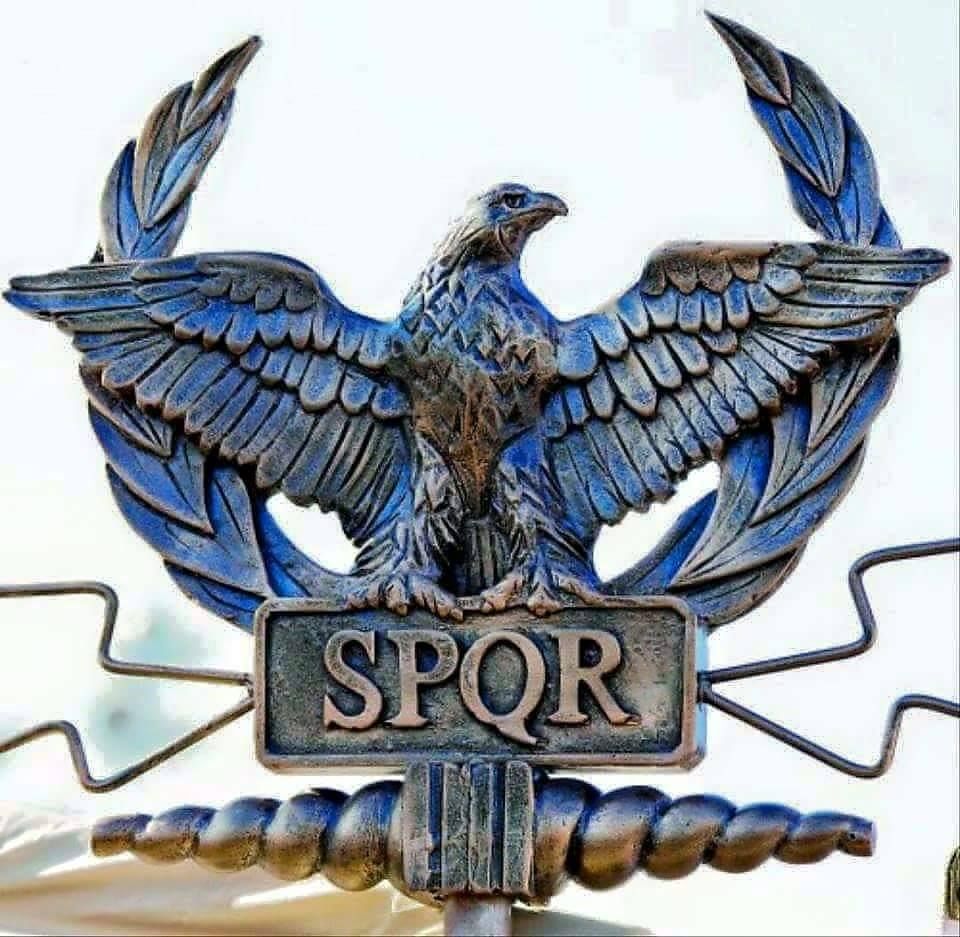
Rome (Italian and Latin: Roma), the “Eternal City”, is the capital and largest city of Italy and the Lazio region. It is the famous city of the Roman Empire, the Seven Hills, La Dolce Vita (sweet life), the Vatican and the Three Coins in the Fountain. As a millennium, the center of power, culture, and religion, being the center of one of the world’s greatest civilizations, Rome has had a tremendous impact on the world in about 2,500 years of its existence.
The historic city center is on the UNESCO World Heritage List. With magnificent palaces, thousand-year-old churches and basilicas, grand romantic ruins, rich monuments, ornate statues and graceful fountains, Rome has an extremely rich historical heritage and a cosmopolitan atmosphere, making it one of the most visited in Europe and the world, famous, influential and beautiful capitals. Today, Rome has an ever-increasing nightlife scene and is also seen as a shopping paradise, considered one of the world’s greatest fashion capitals (some of the oldest Italian jewelry and clothing stores have sprung up in the city). With so many sights and things to do, Rome can truly be classified as a “global city”.
Districts:
Central Rome
Rome can be divided into several districts. The so-called historic center (Centro storico) is quite small, making up only about 4% of the city’s area. It consists mainly of the area inside the Aurelian Walls and is protected by UNESCO. The neighborhoods are explained below:
Contemporary Center
Where there are many hotels, and plenty of shops and restaurants along Via Veneto; home to the Quirinale, Trevi Fountain, Barberini, Castro Pretorio and the Repubblica.
Old Rome
Center of the Roman Medieval and Renaissance period, with beautiful squares, cathedrals, the Pantheon, and lots of chilled out meals; includes the neighborhoods of Navona, Campo de ‘Fiori and the Jewish Ghetto.
Vatican
The papal city and its endless treasures, monuments, and museums, as well as the surrounding Italian countryside.
Colosseum
The heart of ancient Rome, the Colosseum, the Roman Forum, the Forum of Augustus, the Forum and Markets of Trajan, the Capitol, and its museums.
North Center
Situated in the north of Rome, with Villa Borghese, the Spanish Steps and the elegant Parioli and Salario districts.
Trastevere
A land in the south of the Vatican, on the west bank of the Tiber, full of narrow cobbled streets and lonely squares that inspired artists such as Giorgio de Chirico. Probably the center of the artistic life of Rome.
Aventino-Testaccio
Quarters of Rome off the beaten track with loads of surprises for interested travelers as well as great food.
Esquilino-San Giovanni
South of Termini, with its indoor market, Piazza Vittorio Emanuele, and the Cathedral of Rome Saint John Lateran.
Nomentano
Districts “behind” the railway station. San Lorenzo’s vibrant nightlife.
Suburbs:
Midnight
Extensive suburban neighborhoods north of the center (Municipi III, XI-XV)
South
House of Via Appia park, several catacombs, fascist monumental architecture in EUR and vast suburbs (Municipi IV-IX).
Ostia
A Roman resort and the imposing ruins of an ancient Roman port (Municipio X).
Pantheon
Situated on the Tiber River, between the Apennines and the Tyrrhenian Sea, the “Eternal City” was once the administrative center of the mighty Roman Empire, ruling over a vast region that stretched from Britain to Mesopotamia. Today it remains the seat of the Italian government and the seat of many ministerial offices. Rome has a population of 2.7 million and the metropolitan area has a population of around 4.5 million.
Architecturally and culturally, Rome has some contrasts – you have areas with pompously huge, majestic palaces, avenues, and basilicas, which are then surrounded by small alleys, small churches, and old houses. Rome’s city center is mostly ancient and modern buildings are usually concentrated in the suburbs, unlike in Milan (where new and old architecture come together in both the center and the outskirts). It can also happen that you walk from the grand palace and elegant tree-lined boulevard to a small and cramped medieval street.
For two weeks in August, many Roman residents closed their shops (literally) and went on vacation; during this time, many shops, restaurants, and other amenities will close. The temperature in the city center at this time of the year is not particularly pleasant. If you are currently traveling to Rome, be prepared for Chiuso per ferie (Closed for holidays) signs at many venues. Even during these weeks, the city is exceptionally beautiful and if you are looking for a less crowded holiday in Rome, it is not a bad time. You will always be able to find a place to eat.
The “Eternal City” is linked to the history of antiquity, from the Colosseum to the majestic Vatican and the Sistine Chapel. Rome is one of our most popular tourist cities due to its history, art, architecture, and beauty.
** Interesting Facts About Rome**
- The twin brothers were named Romulus and Remus and were abandoned shortly after birth. They were found by a wolf on the banks of the Tiber, who received them and fed them. When Remus mocked his brother and jumped the furrow that marked the boundary of the future city, he killed him, saying the words: “let everyone who dare to cross my walls perish!” (Latin: Sic deinde, quicumque alius transiliet moenia mea!)
- With nearly 3,000 years of rich history, Rome is often called the “Eternal City”’. Although Rome was founded in 753 BCE, the oldest continuously populated city in the world is generally considered Babylon in modern-day Lebanon, dating back to 5000 BCE.
- The first shopping mall in history was built by the Emperor Trajan in Rome. It consisted of several levels and over 150 stores that sold everything from food and spices to clothing. The Romans were better shopaholics than the Kardashians.
- The ancient Romans used a sponge on a stick to cleanse themselves after passing feces. Public buildings had a long marble bench with openings at the top and openings at the front. There were no doors or partitions. You sat right next to the others and did what you had to do. Once you have done your business, you left a stick with a sponge for another person to use.
- The ancient Romans classified any religion that had special rites or secrets that were only revealed to members of the “secret cult”. Christians had the rite of baptism that was required for “initiation into worship” and participation in the Eucharist. There were many mysterious cults in Rome, such as the Dionysian Mysteries and the Mithraic Mysteries. Many of these cults shared customs, including the cleansing of sin and the concept of death and rebirth. Interestingly, the Eucharist – sharing in the blood of Christ – led many Romans to believe that Christians practice cannibalism.
- Most Romans avoided the cruel treatment of slaves. Like modern employers, they used bonuses to increase productivity.

- The wars between the Romans and Persians lasted about 721 years. It is the longest conflict in human history.
- The ancient Romans celebrated a festival called “Saturnalia”, in which slaves and their owners changed places. Slaves were treated at the banquet in the same way as their owners.
- The inhabitants of ancient Rome had a sewer goddess, a god of the toilet and a god of excrement. Feces were considered food for the dead.
- If the Colosseum of Ancient Rome were built today, it would cost around $ 380 million.
- The Statue of Liberty was inspired by the Roman pagan goddess Libertas.
- After the fall of the Roman Empire, the technology of concrete production was lost for 1000 years. Surprisingly, ancient Roman concrete lasts 2,000 years, which is longer than modern concrete structures.
- Ancient Roman women rubbed the sweat of gladiators to enhance their beauty and complexion. The Romans also drank the blood of gladiators because they thought the blood of these strong and fierce creatures had the power to heal epilepsy.
- Urine was used in ancient Rome to wash clothes. The Romans also used it for teeth whitening. Later, the Romans started using bees to brush their teeth.

- Rome is older than Italy. In ancient times, the Italian Peninsula was home to many cultures. The Roman Empire absorbed many of these populations, but after the fall, the peninsula was again divided into several city-states, most of which were often at war with at least one neighbor. Despite several attempts, Italy did not become a united nation until the end of the 19th century, and Rome was annexed in 1870 after a relatively short siege. The commonly accepted date of founding Rome is 753 BC, making the city more than 2,500 years older than the country of which it is the capital.
- Rome has a sovereign state located within its city limits, the Vatican City State, which is also the smallest state in the world.
- Romans would object to the claim that “all roads lead to Rome”. The Romans built a system of roads, primarily to facilitate the movement of troops and ensure the free flow of supplies. Roman roads also favored trade. However, in the eyes of the Romans, all roads lead From Rome – from the golden mill Milliarium Aureum.
- Nero’s reign had many memorable moments, including the killing of Agrippina’s mother and Octavia’s wife. When he died, he said, “What an artist is dying!” (“Qualis artifex pereo!”)
- Each year, almost 700,000 Ruro coins are thrown into the Trevi Fountain in Rome. Revenue is donated to Caritas.
- Hollywood has repeatedly confused the importance of thumbs up. The gesture meant death. If the loser could live, the gesture Caesar was showing was a thumbs-down, which meant the winner was about to lower his gun.
- Gladiator fights were not the most popular entertainment. It was chariot racing.
- Modern archaeologists estimate that the Colosseum could hold 50,000 people.
- Many people consider spaghetti the showpiece of an Italian dish. However, it is believed that this dish originated in the United States at the turn of the 19th and 20th centuries among Italian immigrants. Visitors to Rome are often surprised that it is extremely difficult to find this dish on a restaurant menu.
- It is estimated that Rome is home to some 300,000 cats, and they are generally free to run around. Roman law says that if at least five cats live together, they cannot be removed. Basically, this gives them access to most sites in the city, including many ancient ruins.
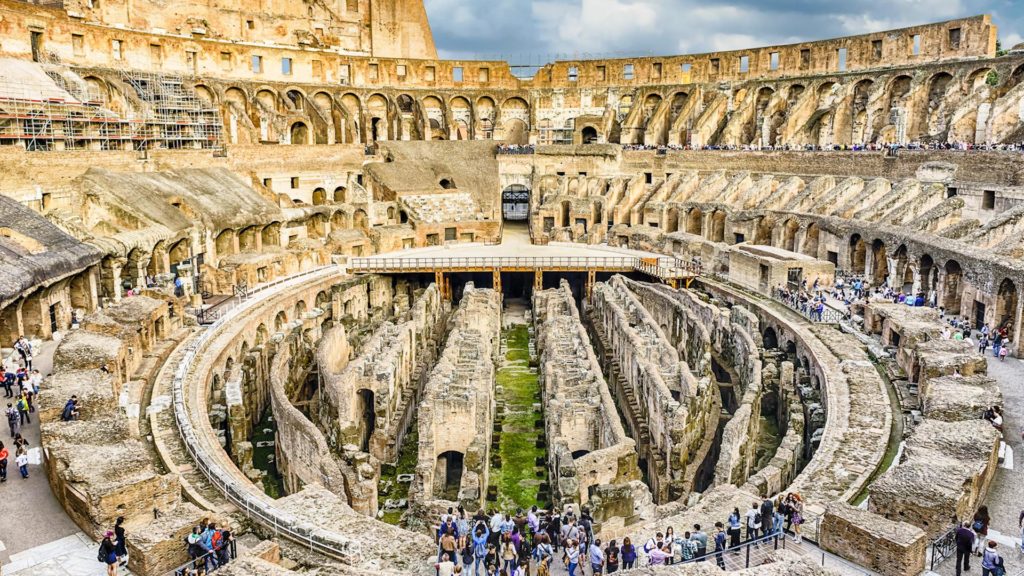
- Women in ancient Rome dyed their hair with goat fat and ash. The most popular colors are red and blonde.
- Rome has more Christian churches than any other city. There are cities in the world that have more churches when they contain mosques, temples, and other houses of prayer. However, Rome is home to over 900 Christian churches.
- About 90% of the ancient city has not been excavated and may never be excavated.
- Most of the remains are about 10 meters below the present city level. This area has been continuously inhabited for approximately 2,800 years. Old buildings have either been destroyed by the passage of time and nature or have been demolished to make way for new buildings.
- Several religious sources claim that Nero was the Antichrist and will return as the Antichrist. Some scholars argue that the numbers 666 in the biblical book of Revelation is a code for Nero.
- The first University of Rome in Rome, La Sapienza, founded in 1303, is the largest in Europe and the second largest in the world.
- Rome has a museum dedicated to pasta.
- The cappuccino is named after the Roman order of Capuchin monks.
- Capuchin crypt in Rome consists of five chapels and a corridor 60 meters long and is decorated with the bones of 4,000 deceased monks.
- The first pizza had more to do with bread, and the ancient Greeks added cheese, herbs, and garlic to bread long before the Romans. Tomato-based sauces were not used, tomatoes were only introduced into Europe after explorers reached the New World, and for many years they were considered poisonous. While the Romans did not invent pizza, the Italians perfected it.
- Rome has approximately 2,500 public fountains.
- Rome was the largest European city until London finally overtook it in the 19th century.
- Despite numerous videos of early Christians being thrown to lions, there is no evidence that this ever happened. Although Christians were persecuted for several years, despite the fact that there were battles and hunts for wild animals and frequent executions of criminals in the Colosseum, there is simply no evidence that Christians faced wild lions as punishment for their faith.
- The current Pantheon fell around 126 BC. that is 2000 years ago and has been used continuously since then. Over the centuries, minor modifications have been made to the Pantheon, but the basic structure has not changed. The dome is unique to the building and even after almost two millennia it remains the world’s largest unreinforced concrete dome.
- Rome is a city of echoes, a city of illusion and longing – Giotto di Bondone
- The serpent was a common image in Roman art and jewelry and was believed to have power over family welfare.
- The purple, most expensive dye in Murex shells, was reserved for the garments of the senators of the emperors.
- Sometimes the blood of gladiators was recommended by Roman physicians as a fertility aid.
- Ancient Rome is the cradle of European civilization. The Roman empire spanned centuries and stretched from Spain to the Middle East and Egypt. It is surprising how much we owe to the Romans in today’s world, so it is worth learning a bit about where our European culture came from.
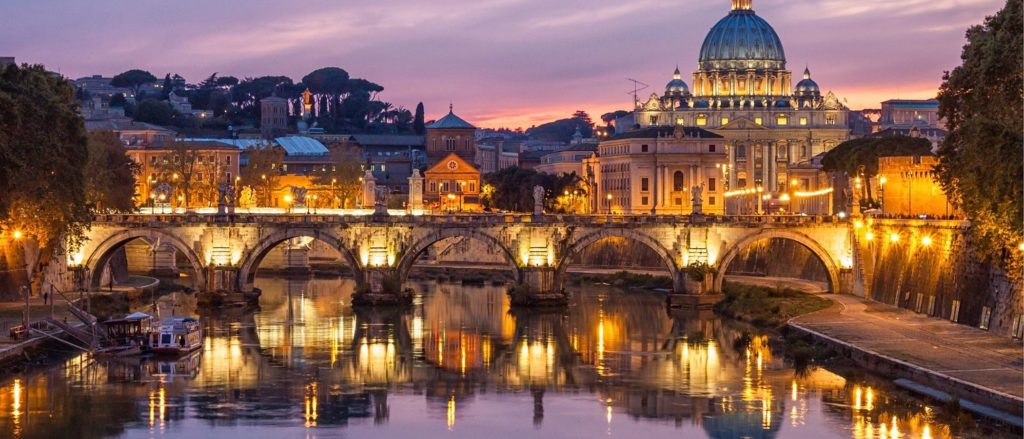
- The power of the head of the family in ancient Rome was enormous. Pater Familias, or the father of the family, could disinherit his son and give him into slavery.
- Patricide was one of the most serious crimes and, of course, was punishable by death. However, it was not an easy death, because the condemned man was sewn up in a huge sack with a dog, a viper and a rooster and thrown into the sea.
- Everyone knows the name of the epilator today, but not everyone knows that the name comes from a slave whose task was to remove unnecessary hair from the skin of his Lord or Lady.
- The Romans did not avoid all stimulants. In addition to alcohol, they also preferred salpa, which is a fish eating which caused hallucinations, often lasting up to 36 hours.
- Ancient Roman cuisine was remarkably diverse. One of the fashionable delicacies was baked flamingo tongues.
- When it comes to the delicacies of the highest society, those who wanted to show how well he and his family are both served an unusual dish at the feast. It was a roast cow stuffed with a pig stuffed with goose stuffed with duck stuffed with chicken.

- Roman women devoted a lot of attention to their beauty and tried to care for it as best as possible. When the conquest of northern Europe began and the fair-haired slaves began to be imported, the Romans wanted to resemble the northern slaves, because they envied their original beauty.
- Gladiators’ sweat was a very desirable substance. It was commonly believed that rubbing it on the face significantly improves a woman’s complexion. It was also considered an extraordinarily strong aphrodisiac.
- Crooked-nosed people were held in high esteem because it was a superstition that Crooked Noses were natural leaders.
- Taking one’s own life was initially acceptable to the ancient Romans. Over time, suicide began to be perceived as a crime, as each incident generated costs that had to be covered by the state.
- Christians were widely regarded as cannibals. This view came from rumors that Christians eat the flesh and drink the blood of Christ, which was true in some ways, but obviously not literal.
- Few people know that the freedom of speech that prevailed in ancient Rome was great. An example of this can be the poem Catullus, written in the 1st century BC, addressed to Marcus Furius Bibaculus and the senator Aurelius. The piece is so obscene and vulgar that it was not translated from Latin until the 20th century. Currently, it is still mainly available in English.
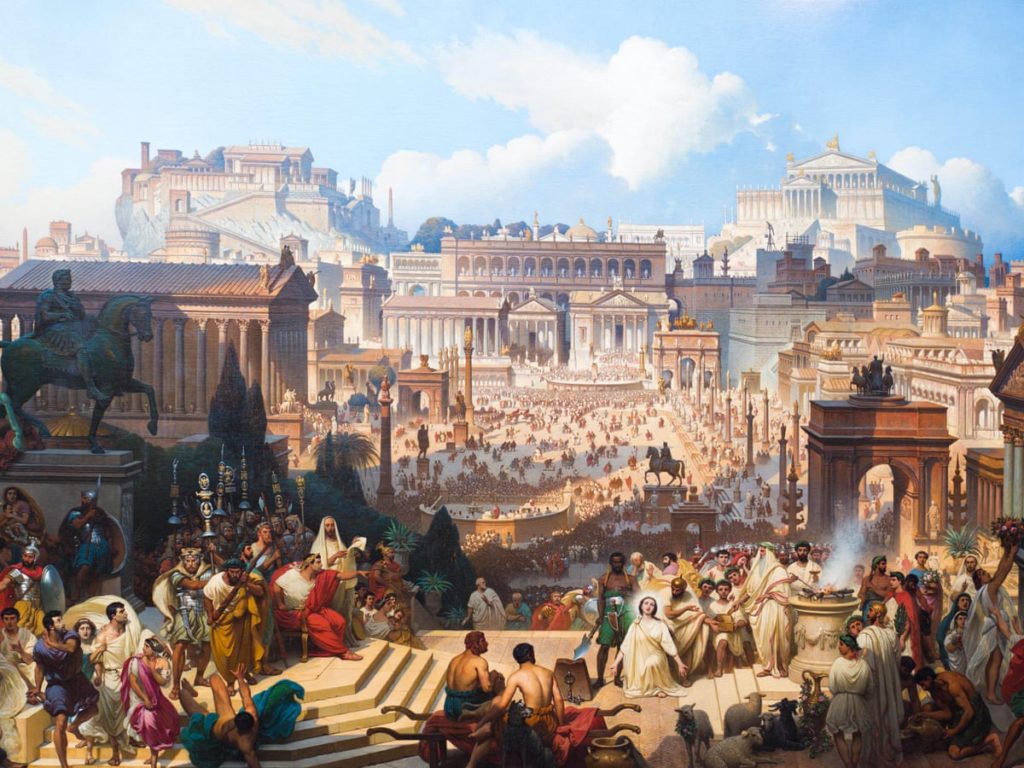
- Mourning was celebrated in ancient Rome extremely severely. During the mourning period, the mourners did not mistake, cut their nails, did not style their hair, or changed their clothes for a specified period.
- Roman medics recommended having intercourse in the middle of a woman’s menstrual cycle, which would ensure almost zero chance of pregnancy.
- In ancient Rome, it was common to use lead as an artificial sweetener.
- If someone was left-handed, that is, the Romans considered someone unlucky and untrustworthy.
- Life expectancy in ancient Rome was around 20-30 years. You had to hurry to achieve anything.
- The blood of brave gladiators was a very welcome commodity because it was believed to be able to cure infertility and epilepsy.
- Contrary to popular belief, the death of a gladiator was not as frequent and common as it might seem, because the costs associated with training a good gladiator were too high to bet on just one duel.
- The entrepreneurs who bought gladiators and trained them to fight were called Lanists.
- The most famous lanista is Batiatus, who trained Spartacus.
- Spartacus was a Roman gladiator who sparked an uprising so great that it threatened the power of Rome.
- When the Roman emperor was dying, the eagle was released. He was supposed to take the soul of the deceased emperor to the stars.
- Emperor Caligula are famous for their madness. Once, furious with Neptune, the god of the seas, he declared war on him and ordered his legionnaires to go into the water and network with gladius in the waves. The legionaries had no choice but to obey the mad emperor and fight the waves of the sea.
- Another absurdity of Emperor Caligula may be that he ordered his favorite horse to become a senator. He was put on a toga and introduced to the proceedings.
- Caligula also loved to sadistically frighten his subjects. There is a story when drunken patricians were locked in a cage with wild animals, from which all teeth and claws were torn out. However, when the locked ones woke up and realized what was happening, they panicked to leave the cage. The emperor was said to have laughed hard, even though one of his subjects was just dying of a heart attack.
- The ancient Romans were incredibly careful about their own hygiene, as evidenced by the fact that there were over 900 public baths in the city.
- The Romans were a very tolerant nation because they did not judge people by the color of their skin. For example, seeing a black person in Rome was not anything spectacular.
- Praeco acted as a city shouter who shouted important information in the square every day. Something like today’s news.
- Roman men returning home kissed their wives on the lips to check that in their absence, they did not drink the forbidden wine.
- Julius Caesar received 23 blows with a dagger. The murders were committed by conspirators headed by Brutus.
- The slave was considered part of the property of the owner.
- Emperor Octavian Augustus, caring for the soldiers, forbade them to marry. This ban was lifted only 200 years after the death of the emperor.
- A slave in ancient Rome had to reckon with constant corporal punishment.
- Contrary to popular belief, the slave’s life was not as hard as it generally seems. A slave treated well worked much better and was much more loyal than the one who was treated badly.
- Aqueducts transported water to ancient Rome and other cities of the empire. The word Aqueduct in Latin means “water way”.
- The popular saying “all roads lead to Rome” did not come from nowhere. The Romans built exceptionally durable and good roads that led from every corner of the empire to its capital, Rome.
- Gladiators were mainly slaves or prisoners of war, but there were also cases where a Roman citizen voluntarily became a gladiator. Most often it was about unpayable debts, or simply about the desire for fame.
- The best gladiators were celebrities who resembled today’s footballers with their fame.
- Gladiator fighting in the arena could fight for his freedom. He then received a wooden sword called “Rudis”, which symbolized the freedom he had won.
- Women in ancient Roman society could not vote or exercise real power. Despite the advancement of civilization, women in Rome were treated poorly.

- The toga was not worn by the Romans all the time. It was the equivalent of today’s suit. The color of the toga was also especially important because purple was reserved only for the rulers. Whoever dared to wear such a color was sentenced to death very quickly.
- Hadrian’s Wall is a 72.7 miles (117 km) long rampart that separated the Roman territories on the islands of Great Britain from the territories of the northern tribes that were at constant war with the Roman Empire. The Picts belonged to such a tribe.
- Caesarean section was invented in ancient Rome. It was performed on women who died during pregnancy or childbirth, because the law forbade burying the mother without removing the child from her body. This is how Julius Caesar himself was supposed to be born.
- Roman teachers applied corporal punishment to their students. Most often, rods were used, but also fists.
- The crucifixion was a form of shameful death penalty that threatened the greatest criminals. One of its greatest uses came after the suppression of the Spartacus uprising, when about 6,000 insurgents were crucified along the Via Appa.
- After the murder of Julius Caesar, his body lay on the floor of the senate for 3 hours. Only after that time, his funeral was dealt with. Cesar’s body was burned at the stake.
- Brutus, one of the assassins who murdered Julius Cesar, died by committing suicide.
- The destruction of Carthage is the first so thoroughly documented genocide in history. When in 146 BCE the Romans captured the city, they murdered almost all its inhabitants, and those who survived were taken prisoner. The city was demolished, and the area was sprinkled with salt.
- Compulsory military service was an unpleasant duty for many peoples conquered by the Romans. Those who tried to evade her often cut off their thumbs on their right hand. Over time, such behavior was punishable by death.
- Naumachia, these were special reenactments of naval battles that revealed battles that went down in history as great Roman victories. During such a performance, the arena was flooded with water and real ships were led into it.
- Gladiator fights are not only 1v1 fights. Gladiators often fought with wild animals as well. 2v2 or 2v1 duels were also popular if the opponent was an exceptional strongman.
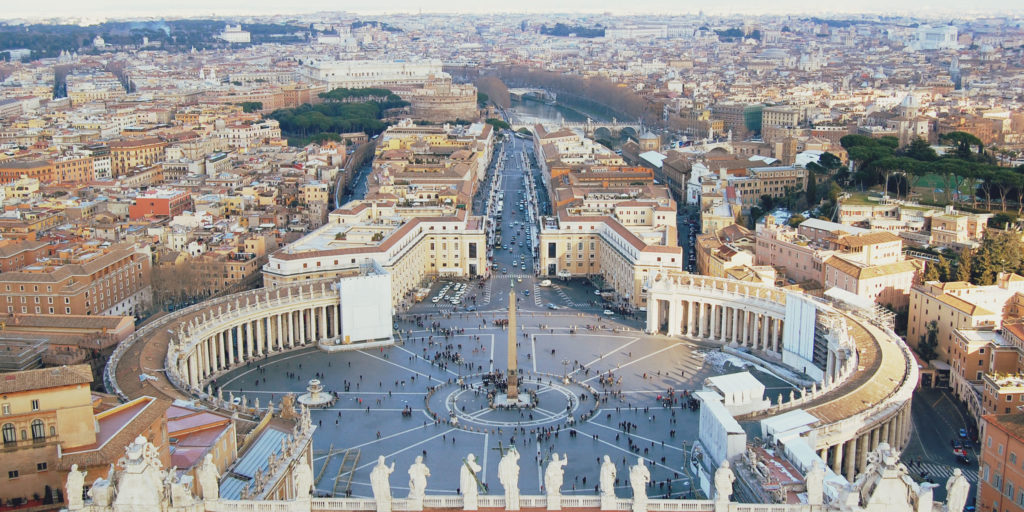
- Nero was one of the most brutal emperors. He murdered his first wife and sent her head to his mistress, whom he later murdered as well. He was also responsible for the death of his mother. He murdered the first Christians with great ferocity, throwing them to devour wild animals or making them live torches.
- Many mad emperors died of conspiracy because their rule threatened the empire too much. Examples of such killings are the deaths of Caligula or Elagabala.
- Emperor Elagabalus was such an insane emperor that he transformed the imperial palace into a huge brothel with endless orgies with his participation. Such things were unacceptable, and therefore a conspiracy was soon formed, and the mad emperor was murdered.
- The first emperor, Augustus, was counted among the gods after his death.
- The Romans were very eager to accept new gods from conquered peoples.
- AD 60.476 is considered the fall of the West Roman Empire because it was in that year that Rome was invaded by the barbarians.
- “Hannibal ante portas”, or the cry of Hannibal at the gate, refers to the historic siege of Rome by the Carthaginian Chief Hannibal.
- Hannibal crossed the Alps with 40 elephants. Due to severe weather conditions, only one of them reached the gates of Rome.
- The Roman Empire was divided into two parts in 395 A.D. From that time on it was divided into the West Roman and East Roman Empire.
- The Western Roman Empire only survived until 476, while the Eastern one fell 1000 years later, in 1453 during the invasion of the Ottoman Turks.
- The last emperor was named Romulus Augustus, the first ruler of Rome and the first emperor.
- Emperor Commodus loved to organize bloody games, where he himself fought as a gladiator.
- The legionnaire fought with a characteristic short sword, called a gladius.
- Gladiators were divided into groups depending on what kind of weapons they fought. They were, among others, Thraex, Murmillo, and Retiarius.
- The official name of the Roman Empire was Senatus Populusque Romanus, S. P.Q.R. for short.
- Rome is often called the “Eternal City” because the city has been continuously inhabited since 753 B.C.
- The fall of Rome lost concrete production for nearly 1,000 years. Interestingly, Roman concrete can survive for over 2,000 years, which makes it much more durable than what we know today.

- During the Games, public executions were held very often. The condemned were thrown to be devoured by wild animals or torn by horses.
- Urine was used in ancient Rome for washing clothes.
- The life of Roman prostitutes was extremely hard because they were often beaten. If one became pregnant, she had to have an abortion or infanticide because a pimp forced her to do so.
- The Colosseum in Rome, in its highest point, could accommodate up to 50,000 people.
- The Vatican is now in the same place where Nero tried to exterminate the Christians.
- Contrary to popular belief, a thumbs-down gesture did not mean death, but a pardon.
- Ancient Rome had its own shopping gallery known as the Halls of Trajan.
- In ancient Rome, urine was taxed.
- Roman civilization was established as early as the 8th century BC.
- The Velarium was a canvas cover that protected the spectators of the Colosseum from rain and sun.
- Praetors dealt with the judiciary in ancient Rome.
- The People’s Court represented the interests of the commoners in the Roman Senate.
- The last gladiatorial fight in the Colosseum was held in 435.
- The city of Rome is older than the State of Italy.
- Vestals, or priestesses of the hearth, absolutely had to be and remain virgins.
- The Roman elite liked to have chats in the city’s toilets.
- The slaves most often ate bread and drank vinegar or wine.
- Prisoners of war were sold at slave markets.
- During crucifixion, nails were hammered not in the hands, but in the wrists.
- The Romans added a sauce of fermented fish called garum to their dishes.
- Ancient Rome was spread over 7 hills:
Rome was built on 7 hills on the eastern left bank of the Tiber. They played an especially important role in mythology, religion, and the politics of ancient Rome:
Aventine (Mons Aventinus): initially it was not incredibly famous and was not part of the city. Only during the Empire did it become a favorite district of the Roman aristocracy, full of luxurious villas and palaces
Palatine Hill (Mons Palatinus): according to tradition and the latest archaeological research, this place was the site of the oldest Roman settlement, the so-called Roma quadrata
Quirinal (Collis Quirinalis): the highest of the 7 hills that turned into a district of palaces and gardens at the end of the republic (1st century BC). Today it houses the palace of the President of the Italian Republic, and the baroque church of St. Andrew
Wiminal (Collis Viminalis): located in the central-eastern part of the city. Emperor Diocletian built a thermal bath here
Celius (Mons Caelius): wealthy Romans lived here in antiquity
Esquilin (Mons Esquilinus): during the republic it was inhabited by poor Roman people. Today, on the hill, there is the Basilica of Saint Mary Major and the Basilica of St. Peter in Oki
Capitoline Hill (Mons Capitolinus): from the beginning of Rome, Capitoline Hill was a fortress and sanctuary and a symbol of the city
- Not only was Rome the largest city in ancient times, but its population exceeded one million. It is the oldest city that still exists today, with a population of over 1 million.
- SPQR – Senatus PopulusQue Romanus. A mysterious abbreviation that can be seen when visiting the capital of Italy on public transport vehicles, on numerous fountains or other monuments, and also on the city’s coat of arms – SPQR means – “Senatus PopulusQue Romanus”, meaning “Senate and Roman People”. In ancient times it was the official name of the Roman Empire and the abbreviation SPQR was part of the national emblem.

- The Colosseum was a gift from the Flavians to the Roman people. The Flavian Amphitheater, or the Colosseum, was a gift to the Roman people, according to the principle that “the people want bread and games”. The construction of the Colosseum was started by Emperor Vespasian, while Titus Flavius completed. The inauguration of the facility was graced by a 100-day festival, during which fights with gladiators and wild animals took place in the arena.
- What does “Veni, vidi, vici” mean?
One of the most famous Roman emperors was Gaius Julius Caesar. He was a highly intelligent and effective military leader. In 47 BC Pharnakes II, King of Pontus, challenged Rome. For Julius Caesar, defeating Pontus was not a problem, the whole matter was decided during the express campaign, which ended with the victorious battle of Zela. In a letter to the Senate, he wrote briefly: “Veni, vidi, vici”, that is, “I came, I saw, I won”.





